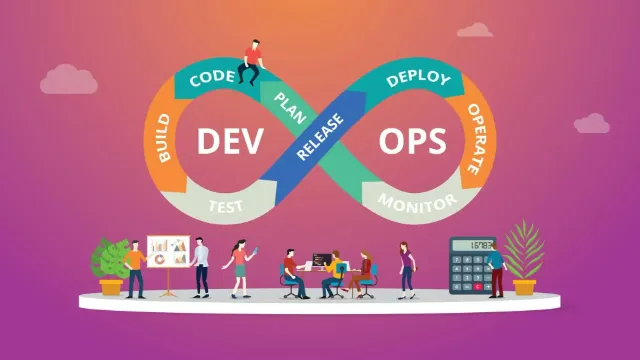Software Development Life Cycle Process Explained In 2025

Introduction
The technique used during the software development process is called a software development lifecycle (SDLC). SDLC builds software applications effectively and with high quality by adhering to conventional business standards. It aids the group in overseeing and streamlining every phase of the software development process. SDLC makes use of software teams to develop high-quality and cost-effective software solutions in the quickest amount of time. Software organisations can choose from a variety of SDLC models based on their needs and specifications. Let’s examine the two most popular approaches to software development.
Agile: The agile model is an SDLC model that adheres to the incremental method and swiftly adjusts to changing requirements. The work is broken up into brief sprints with predetermined deliverables, which are often finished in a few weeks or a month. Agile has many advantages, like increased productivity, lower risks, quick time-to-market, responsiveness, etc. The three most widely used agile processes are Extreme Software Development, Scrum, and Kanban.
Waterfall: This SDLC model is best suited for projects with well-defined project requirements because it divides project operations into linear sequential phases, meaning how the team advances on to the next stage after finishing the previous one. This procedure is what makes it challenging to make changes once the endeavour moves on to the next phase.
What are the different stages of the software development lifecycle?
The following are the different stages of the software development lifecycle:
Project planning
Project planning, the first stage of the SDLC, is the best way to determine why software is being created. It aids in strengthening the team and the executive leadership of the project. Following team formation, the project manager and stakeholders talk with the team members about the project’s aims and objectives. At this stage, the project’s scope, budget, schedule, and milestones are determined. This stage is meant to make sure that everyone on the team is aware of the significance and goal of creating a project. Additionally, it facilitates effective communication between stakeholders, managers and everyone on the team.
Requirement analysis
To understand how the program will function and how it will address the particular issue for which it will be developed, requirements gathering and project analysis are crucial. Meeting the needs and specifications of a client is essential when developing software for them. Find out from the client what needs to be done with the software. Analyse the project’s features and functionalities in detail, and most all, understand who your target market is. Compile project details and decide which platform Windows, iOS, Android etc. you want to create software for.
Design
Prototyping and user interface development, which require collaboration with the design team, are the two stages that make up the design phase. Low-fidelity wireframes and high-fidelity wireframes are the two kinds of wireframes produced during the prototyping phase. The wireframe is a website’s skeleton or structure that is used to determine a software’s user interface screens, content arrangement, and useful flow. In simplified development, the displays are quickly created on paper and reviewed by the entire team. Prototypes, or software, are used to produce detailed designs. Whenever the program is put into execution, the initial layout is evaluated to determine how it will function. End users test prototypes. The software moves on to the designing stage once the prototype design has been successfully tested.
The design team chooses the design components, typography, font, graphics and colour scheme to create the software’s practical interface for users throughout the creation process stage. In the UI phase, every screen developed in a prototype is implemented with a straightforward and user-friendly interface.
Implementation
As the developers write the project’s real code, this stage is one of the most important and time-consuming. Depending on the needs of the project, the development team might select a programming language and framework for the software implementation. The project’s many features and functions that were previously addressed during the requirement analysis phase are implemented by the developer. At this point, the software involves database design and coding. To guarantee that the software is fully working, the database and code are connected. If the development team adheres to the agile SDLC, they can make modifications to the software. Additionally, it would enable developers to promptly adjust to the evolving software trends.
Also Read: Choosing the Right Software Development Models for Your Project
Testing
The quality assurance team tests the software to make sure it is error-free and operating correctly in terms of speed, functionality, and usability. Before the software is released, it is crucial to find bugs, malfunctions, flaws and broken code. Functional testing, regression testing, integration testing, load testing, usability testing, security testing, smoke testing and other sorts of testing are all carried out by the QA team. Testing is a crucial stage since without it, software may run poorly and have major problems.
Deployment
The program is executed at the web server or in a manufacturing setting to ensure that it is running and functioning correctly on a target device. The deployment of the project guarantees that everything is proceeding according to plan and that the software is operating without any problems on both the production and customer sides. Software deployment allows for the automatic targeting of precise updates, software, maintenance tasks, and uninstallation, as well as the real-time examination of PCs for errors.
Launch and maintenance
It is time to release the software onto the market once it has been installed and is functioning properly on the intended device. Your intended audience will be utilising your program at this point. You must maintain and update it following a successful launch.
During the routine upkeep phase, several elements are taken into account
Virus and sensitivity detection
bug fixes and repairs
productivity enhancement
support for the most recent OS platforms
code optimisation
adoption of the newest trends
with assistance for third-party providers
Also Read: Top 10 Software Development Outsourcing Companies
Final words
To guarantee that the project is created smoothly and effectively, it is crucial to adhere to the software development approach. Every stage of the SDLC is crucial and neglecting any one of them could cause major problems for the project’s overall progress. It might be highly advantageous to choose the SDLC that best fits your project’s requirements. waterfall can be the best option if your project’s objectives and requirements are clear and well-defined. Conversely, agile is a novel approach to software development that has six times the success of conventional software approaches.






